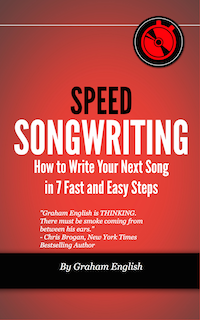
Unlock your creativity and elevate your songwriting skills by diving into the world of music theory.
In this guide, we'll explore practical music theory applications that will help you streamline your songwriting process and create captivating music.
Table of Contents
- The Importance of Music Theory for Songwriting
- Building Blocks of Music Theory
- Creating Memorable Melodies
- Crafting Compelling Chord Progressions
- Enhancing Your Songs with Arrangement Techniques
- Incorporating Modes for Emotional Impact
- Utilizing Rhythm and Time Signatures
- Developing a Personal Songwriting Workflow
The Importance of Music Theory for Songwriting
As songwriters, understanding music theory allows us to:
- Communicate effectively with other musicians
- Make more informed creative choices
- Develop a deeper understanding of our unique sound
- Analyze successful songs for inspiration
Building Blocks of Music Theory
Scales: The Foundation of Melody and Harmony
Scales are sequences of notes arranged in ascending or descending order. Familiarize yourself with major and minor scales, as they form the basis of most Western music.
Intervals: The Building Blocks of Harmony
Intervals are the distance between two notes. Mastering intervals will help you create harmonies that resonate with your listeners.
Creating Memorable Melodies
Establish a Theme
Create a central theme by using a recurring motif, a short musical idea that serves as the foundation for your melody.
Develop Variations
Experiment with different note lengths, rhythms, and intervals to add variety and interest to your melody.
Utilize Repetition and Contrast
Balance repetition and contrast to make your melody catchy and memorable. Too much repetition can be monotonous, while too much contrast can make the melody feel disjointed.
Crafting Compelling Chord Progressions
Start with Diatonic Chords
Diatonic chords are derived from a single key. Familiarize yourself with major and minor diatonic chords to create harmonically rich progressions.
Experiment with Non-Diatonic Chords
Non-diatonic chords, borrowed from other keys or modes, can add color and tension to your chord progressions.
Use Cadences for Resolution
Cadences, or chord sequences that create a sense of resolution, can help you create satisfying endings to your progressions.
Enhancing Your Songs with Arrangement Techniques
Layering Instruments
Carefully layering instruments can help you create a rich, full sound. Experiment with different combinations of instruments to find the perfect balance for your song.
Dynamics and Articulation
Control the intensity and expression of your music by manipulating dynamics (volume) and articulation (how notes are played).
Textures and Timbres
Experiment with different textures (the overall sound created by multiple layers of instruments) and timbres (the unique sound of individual instruments) to create a unique sonic landscape.
Incorporating Modes for Emotional Impact
Modes are scales that share the same notes but have different tonal centers. Experimenting with modes can help you evoke a wide range of emotions in your music.
Dorian Mode
The Dorian mode is similar to a natural minor scale but with a raised 6th degree. It can create a mysterious or melancholic atmosphere.
Mixolydian Mode
The Mixolydian mode is like a major scale with a lowered 7th degree. It has a bluesy or slightly unresolved feel, perfect for creating tension or a sense of longing.
Lydian Mode
The Lydian mode is a major scale with a raised 4th degree. Its dreamy and ethereal quality can add a sense of wonder and magic to your music.
Utilizing Rhythm and Time Signatures
Experiment with Different Time Signatures
Most popular music is written in 4/4 time, but exploring other time signatures like 3/4, 6/8, or 5/4 can give your songs a unique rhythmic feel.
Use Syncopation and Accents
Syncopation, or placing emphasis on off-beat notes, and using accents to highlight specific beats can add rhythmic interest to your music.
Vary Note Lengths and Rests
Combining different note lengths and incorporating rests can create a more dynamic and engaging rhythmic structure.
Developing a Personal Songwriting Workflow
Establish a Routine
Set aside dedicated time for songwriting to help you stay focused and productive.
Keep a Journal or Voice Recorder
Capture your ideas as they come to you, whether in a journal or using a voice recorder. These snippets can be the seeds of future songs.
Collaborate with Other Musicians
Collaborating with other musicians can spark new ideas, offer fresh perspectives, and help you grow as a songwriter.
Analyze and Learn from Your Favorite Songs
Study the structure, melody, harmony, and arrangement of your favorite songs to uncover the techniques that make them successful.
By implementing these music theory concepts and techniques, you'll be well on your way to crafting captivating songs that resonate with your audience.
Embrace the power of music theory to transform your songwriting process and create music that stands out in the crowded world of contemporary songwriting.

Enter your first name and email address below and click “GET ACCESS NOW!” to get the Speed Songwriting Cheat Sheet delivered to your inbox!
We guarantee 100% privacy. Your information will not be shared.

Leave a Reply